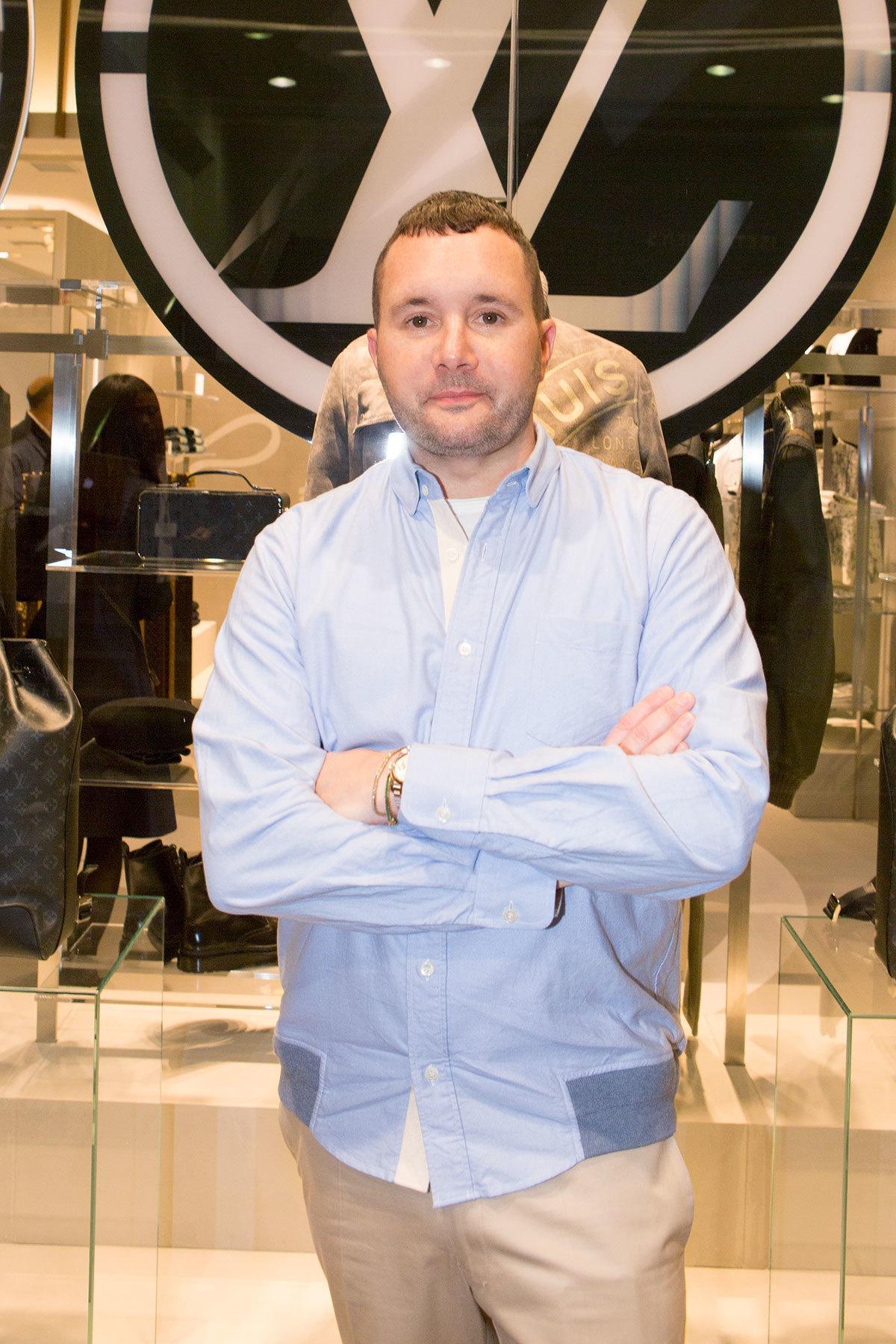It’s been five years since Kim Jones was appointed Artistic Director of Louis Vuitton menswear. The brand has its roots in the world of travel, and the subject has remained a perpetual theme for the company since its inception. Jones himself has drawn inspiration from travel since his debut in 2011, and after a few trips around the globe of his own, he has now turned to the concept of traveling through time and space in his latest collection, Future Heritage.
Could you tell us about main theme of your latest collection?
When I saw the Volez, Voguez, Voyagez – Louis Vuitton exhibition in Paris, I started to think about what kind of things would be being exhibited in the same way 100 years in the future. I was thinking about how people in the future would look at stuff from our generation, you know? I think it’s important to look back on the history and traditions of Louis Vuitton and Paris to help us continue into the future, so I tried to keep a good balance of past and future styles in this collection. There are loads of young and exciting new designers and stylists coming up right now in Paris — just look at Vetements, for example. The whole city is just bursting with this youthful energy. That’s really stood out to me, so I wanted to try to mix that vibrant youthfulness with the more traditional side of things that have been passed down to us over the years.
You took inspiration from Alex von Rosenberg— the socialite baron who became a figurehead for high society in 20th century Paris— right?
That’s right. As an Austrian who originally lived in New York, he was very much an outsider in Paris. I’m also a foreigner, but I’m still very much both attracted to and inspired by the people of Paris. Everyone there has a very intimate connection with their city, but they all still look at it from an objective viewpoint. I naturally see things from the same kind of standpoint, so even though I’m not one of them we can still share some common ground in that regard.
Do you think the kind of high society that was around in Rosenberg’s era still exist today? And if so, where?
I think it’s the people living the “jetsetter” lifestyle: they travel wherever they like and they live all over the place. They’re very successful, and they lead glamorous lives completely surrounded by luxury.
You’ve breathed new life into a timeless classic, the Monogram Canvas. Could you tell us about how the new version came about?
I actually got the concept for the Monogram Eclipse from an old trunk. Its surface had turned black and glossy with age, and I wanted to recreate that quality. I originally wanted to do it in gun metal; we tried out about 40 different kinds of material, but I didn’t find what I was after until we applied the “Damier” technique to the Monogram. The result is more masculine than the regular Monogram Canvas bags. It’s chic and casual, but it’s also totally suitable for business.
This collection features leather and denim dyed with a wax-resist process. You’ve used traditional techniques in a contemporary way; how did you get to that point?
First of all, I just started hoarding loads of vintage denim. Denim used to be made with these fantastic techniques that just aren’t used any more, you know? When it was brought to Japan in the 50s, they started using all these unique processes on it; Japanese people have this totally thorough and dedicated attitude towards everything they do. They take things that other people invent and make them their own, elevating them to a whole new level. I think that’s why Japanese denim is the best, and it’s why I wanted to use traditional Japanese techniques on the denim in this collection.
What do you like about Japan?
I love Japanese fabrics. You can really see the craftsmanship and the pride that goes into them. Lots of care is taken in the production process and the technical quality is very good, which really appeals to me. I used to work for a company called Gimme5 when I was at university, and that’s where I met Jun Takahashi, Hiroshi Fujiwara, and Nigo. I guess that must have been back in about 1999. Of course, I already knew about Japanese brands like Comme des Garçons and Yohji Yamamoto, and I liked them a lot — they were totally free and unrestricted, which seemed absolutely revolutionary to me. I’ve had a lot of respect for those guys since way back then.
What things do you place the most importance on when producing a collection?
I decide on the seasonal themes for the year as I travel around the world with Louis Vuitton. I place a lot of stress on making real clothes that are both fashionable and functional, but the most important thing for me is to make sure that I can clearly express the message that I most want to convey in any given season.
Credits
Text Kazumi Asamura Hayashi
Photography Keiichi Nitta
